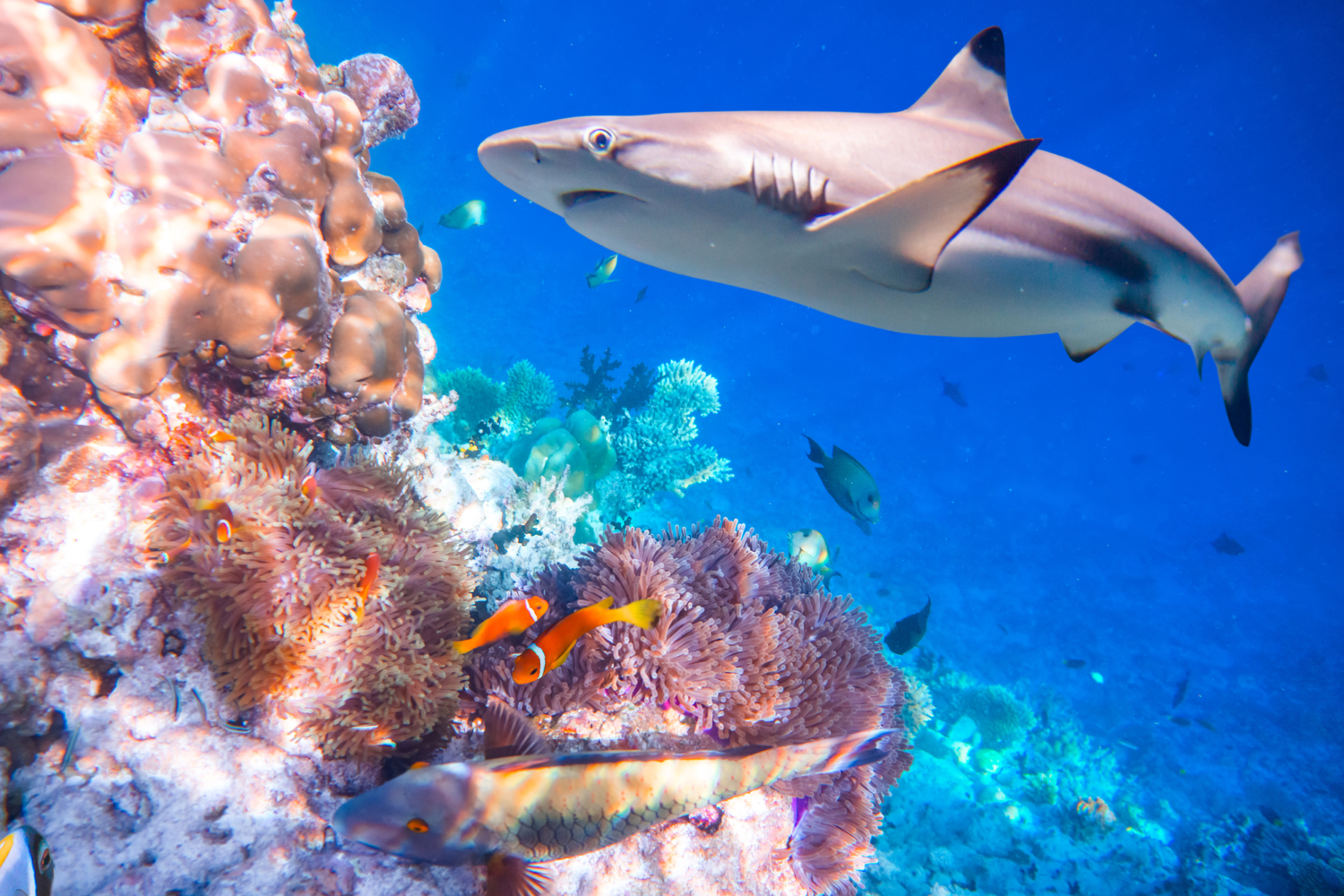How to Play Sharks and Minnows Game Anywhere | Rules and Info
What is Sharks and Minnows?
Sharks and minnows is a group game of tag elimination with the shark (tagger) positioned in the middle of the playing area. The shark attempts to tag minnows (all other players) as they run from one side of the field of play to the other. Any minnow that is tagged while crossing the field becomes an additional shark in the following rounds. The game ends when there is only one minnow remaining, who is declared the winner.
Why Sharks and Minnows is fun and popular?
Physical Education (PE) teachers love sharks and minnows because it’s a fun, structured way to encourage exercise. Basketball, soccer, and other coaches love it because they can easily create variations that mix in ball skills (soccer or basketball dribbling, etc) and conditioning in a game that kids find fun. Kids love sharks and minnows because there is fun participation throughout the game: you’re always either a minnow trying to avoid being tagged, or a shark chasing the minnows.
What does sharks and minnow teach?
Sharks and minnows teaches listening skills (the shark gives 2 instructions in each round), boundaries, and gross motor skills through exercise.
Number of players
Sharks and minnows is best played with large groups of 10 or more, but can be played with as few as four players. When you get above about 15 players, you may want to consider making the field size slightly larger for more room to run, and also adding 1-2 additional sharks to start the game.
Length of Play
A match of sharks and minnows usually lasts 15-20 minutes and consists of three, five-minute games. Each game lasts about 5 minutes and is made up of 5-10 rounds where the kids run back and forth across the field until only one minnow is remaining.
Equipment
One of the best parts about this youthful outdoor game is that aside from an outdoor play area, such as a school yard, park, soccer field, or pool, and a group of eager able bodies, you don’t need anything else! Some people (hello Physical Education Coaches!) like to get plastic safety cones or other markers to designate cut off areas, but this is not required. Also, if you want to reduce contact, instead of tagging, kids can wear pull of flags. Of course, you’ll need to know the game rules, so refer to the tutorial down below.
How to Play the Sharks and Minnows Game
1. Determine the boundaries of the play area
The boundaries of play are important in sharks and minnows. The field of play is usually a rectangle with players traveling the length of the field during play. You’ll want the width of the field to be narrow enough to keep the players within a reasonable distance to be tagged. That usually means half of the field of play of a soccer field, basketball court, hockey rink, etc and can be marked with cones or the natural lines of the field. For a pool, usually the edge of the pool defines the playing area.
2. Choose 1 shark (all other players are minnows)
One player will be the shark (tagger) and the rest will be minnows. To determine the shark in the first game, if there is more than one volunteer, you can select it by age or another method such as rock, paper, scissors.
3. Line up the minnows on one end of the playing field
All the minnows will line up on the end line). This is considered a “safe zone” until the shark calls them out.
4. Position the shark in the middle
The shark starts roughly in the middle of the field before the chasing begins.
5. Start the round when the shark calls the minnows out to play
The shark will call out the minnows to play, usually with the phrase “Hey minnows, swim this way.” At this point, the “safe zone” disappears and the minnows can be tagged at any point. Some minnows may strategize to make a run for it right away, while others may wait to find safety in numbers.
6. Activate the “shark attack”
At any point, the shark can yell “shark attack” and all of the minnows must actively attempt to get across the field to the other end without getting tagged.
7. Cross the field and avoid being tagged
The goal for the minnows is to get across to the other side of the playing field without getting tagged by the shark. Minnows that make it across to the other end of the playing field without being tagged are safe and advance to the next round.
8. Convert tagged minnows to sharks
Any minnows that were tagged get added to the team of sharks for the next round.
9. Continue with the next rounds (and repeat) until there is only one minnow left
As the rounds progress, there will be more sharks and fewer minnows. Continue playing rounds until there is only 1 minnow left.
10. Declare a winner of the game
The last minnow left is the winner of the game.
11. Start the next game
In the next game, the winner of the previous game (last minnow left) starts as the shark.
Sharks and Minnows Game Rules
There are really only 3 rules in sharks and minnows:
Stay within the boundaries: If a minnow goes outside the boundaries, it’s the same as getting tagged and they will become a shark in the next round.
Minnows advance during the shark attack: When the shark declares the shark attack, the minnows must actively attempt to cross the field. This keeps the flow of the game moving. While there is no hard and fast rule of how long the minnows have before attempting to advance, if it becomes a problem, you can set a rule like “within 7 alligators count from the shark attack.”
Minnows are safe once they reach the other side: Once the minnows have reached the other end line of the field, they can no longer be tagged. They are safe until the next round begins and the shark calls them out to play.
Sharks and Minnows Video Tutorial
Sharks and Minnows Game Variations
Game rule variations
Seaweed version
Tagged minnows stay where they were tagged for additional rounds. They stay stationary, but can reach out to tag any passing minnows. This version usually works well in a smaller playing area (like a pool) where it’s hard to avoid getting close to the seaweed players.
Blind shark version
While most versions of sharks and minnows do not have players closing their eyes, sometimes in the pool version, you can choose to make it more challenging by having the sharks close their eyes. For safety reasons, we don’t recommend using a blind shark in any of the land versions of the game.
Playing area variations
One of the great things about sharks and minnows is that it can be played just about anywhere. It’s great in a pool, on a grass field, inside the gym, or in any outdoor area. The game play is the same, just be sure to find the right balance of big enough to move around, but narrow enough that sharks can reasonably tag a minnow in most rounds.
Sport drills variations
The sharks and minnows game is great as a drill for many sports. Generally, the rules are the same, but you’ll incorporate the ball (or puck) into the game. For youth sports, the coach is often the first shark. Let’s take at a few ways coaches incorporate sharks and minnows into their practices:
Sharks and minnows soccer
In soccer sharks and minnows, the rules are generally the same as regular sharks and minnows, but instead of just running across the field, the minnows dribble a soccer ball. And instead of tagging the minnows, the shark attempts to disrupt the dribbling. If the dribbling is broken up, it’s the equivalent of tagging and the minnow becomes another shark. The field size is substantially shrunken down, usually with the use of cones to mark the field of play. Coaches can use this drill as a teaching and skills exercise for building dribbling skills. Kids can use shorter controlled dribbles to avoid getting the ball stolen, and then larger dribbles for when they’re running to the other end.
Sharks and minnows basketball
In basketball sharks and minnows, the rules are generally the same as regular sharks and minnows, but instead of just running across the field, the minnows dribble a basketball. And instead of tagging the minnows, the shark attempts to disrupt the dribbling. If the dribbling is broken up, it’s the equivalent of tagging and the minnow becomes another shark. The field size is usually half court. Coaches can use this drill as a teaching and skills exercise for building dribbling and ball control skills.
Larger group variations
If you’re playing with a larger group, there are two adaptations that can make the game play better. First, consider adding an additional shark to start the game. Second, you can consider increasing the size of the field of play.
What are other games like Sharks and Minnows?
Similar games in the pool include Marco Polo and Goofy. On land, Red Rover and various versions of tag.
Sharks and Minnows Frequently Asked Questions (FAQs)
How does sharks and minnows work?
Sharks and minnows is a tagging game of elimination. The game starts with one shark and everybody else is minnows. In each round, the minnows attempt to travel from one side of the field to the other, without getting tagged by a shark. Any minnow that was tagged joins the sharks in the next rounds. The game continues until there is only one minnow left.
Do sharks eat minnows?
In the game of sharks and minnows, they sure do! In the real world, sharks do sometimes eat minnows, although it’s not a common source of food for them.
How do you play sharks and minnows in the pool?
The rules for sharks and minnows in the pool are pretty much the same as on land. The boundary lines are usually the edge of the pool. And the minnows swim from one side to the other. Players may not get out of the pool and run on land during the game. But they can swim either above or below water!
Do you close your eyes in sharks and minnows?
You don’t usually close your eyes in sharks and minnows, although it is possible to have “blind” sharks close their eyes in the pool to make it more challenging.
What are some other names for sharks and minnows?
Sometimes people refer to sharks and minnows as “ships across the ocean.”
Why is it called sharks and minnows?
The game gets its name from a common predator (shark) and common prey (minnow). Ironically, sharks don’t commonly eat minnows. So it’s more representative of the predator vs prey relationship.



